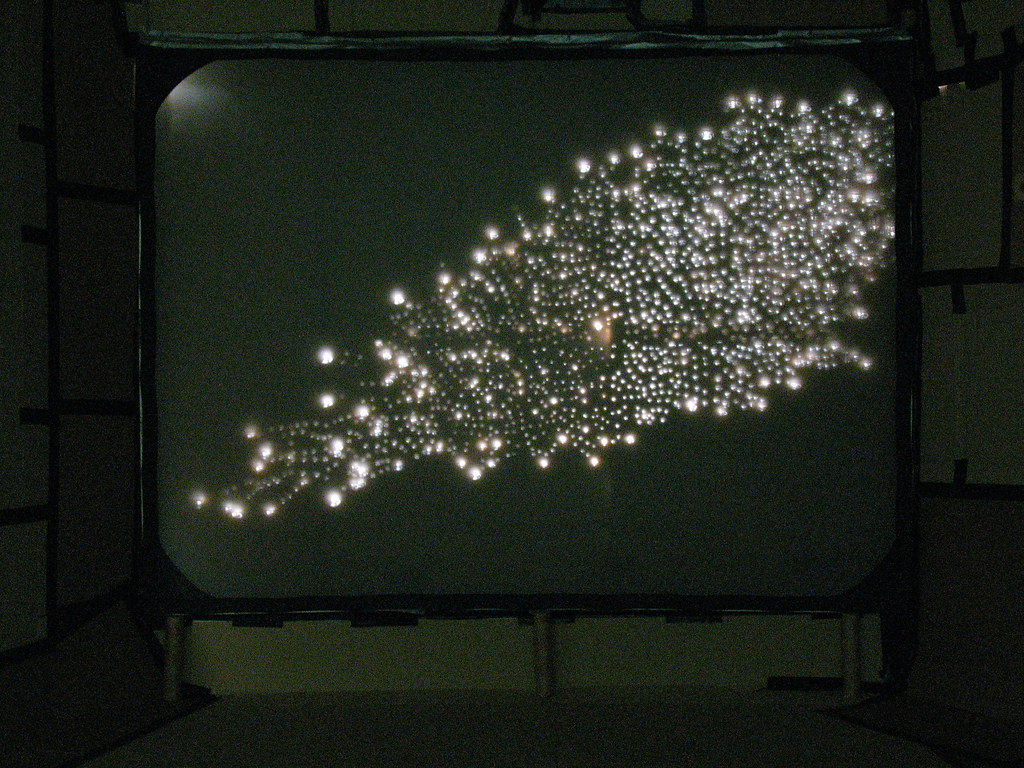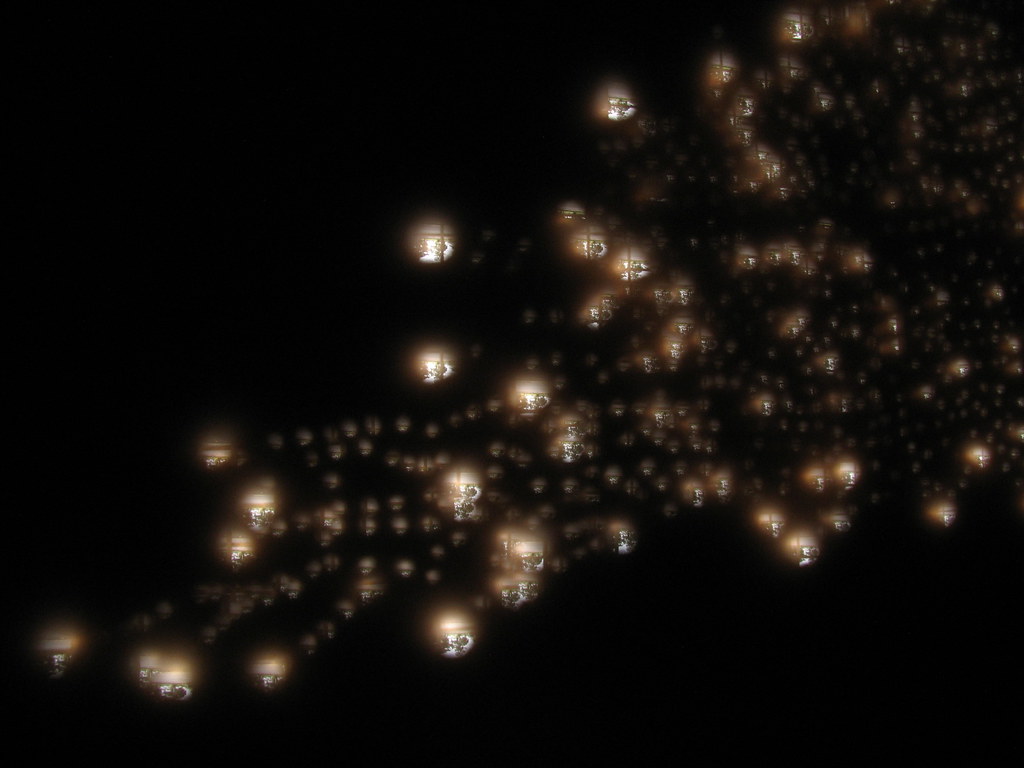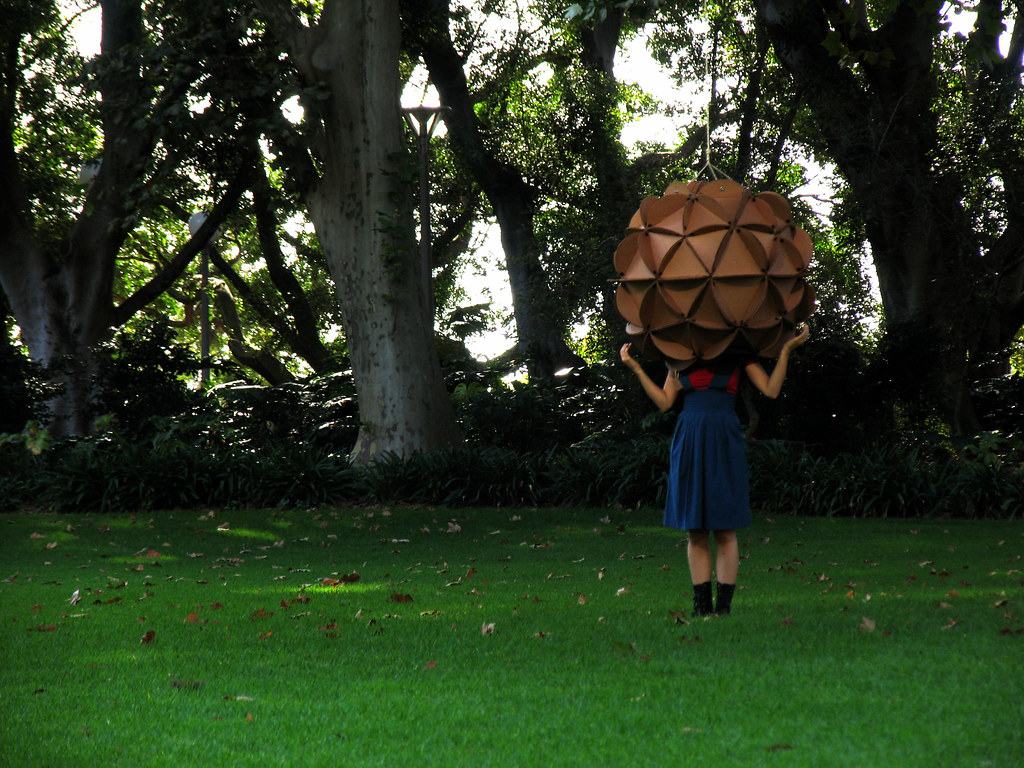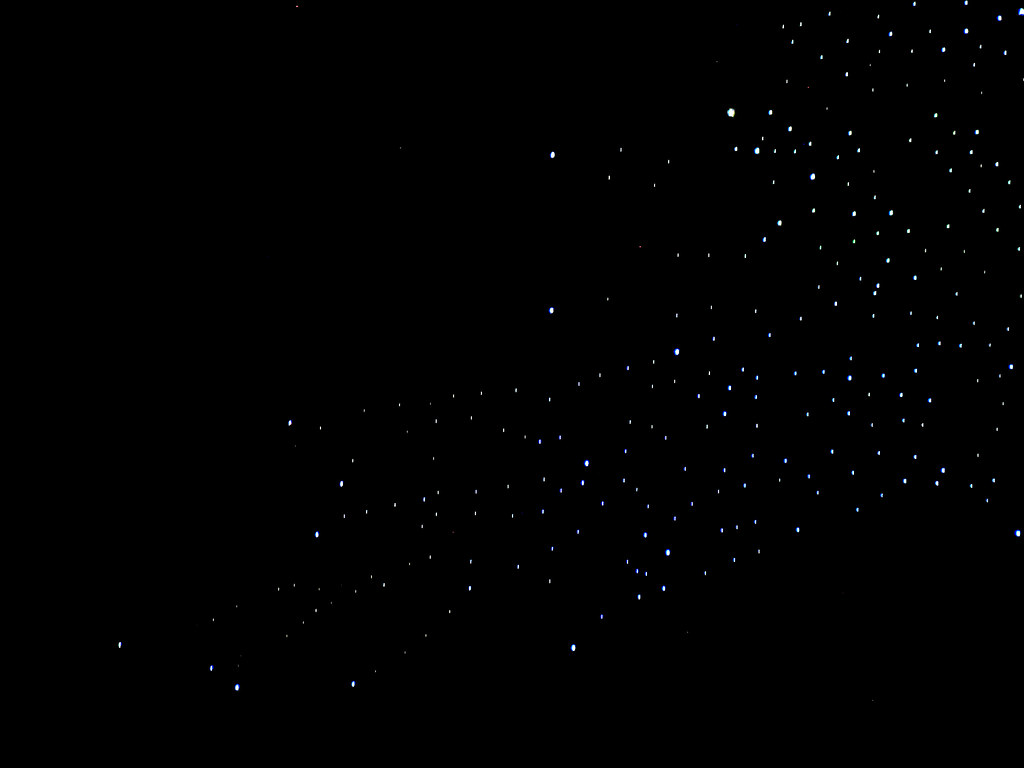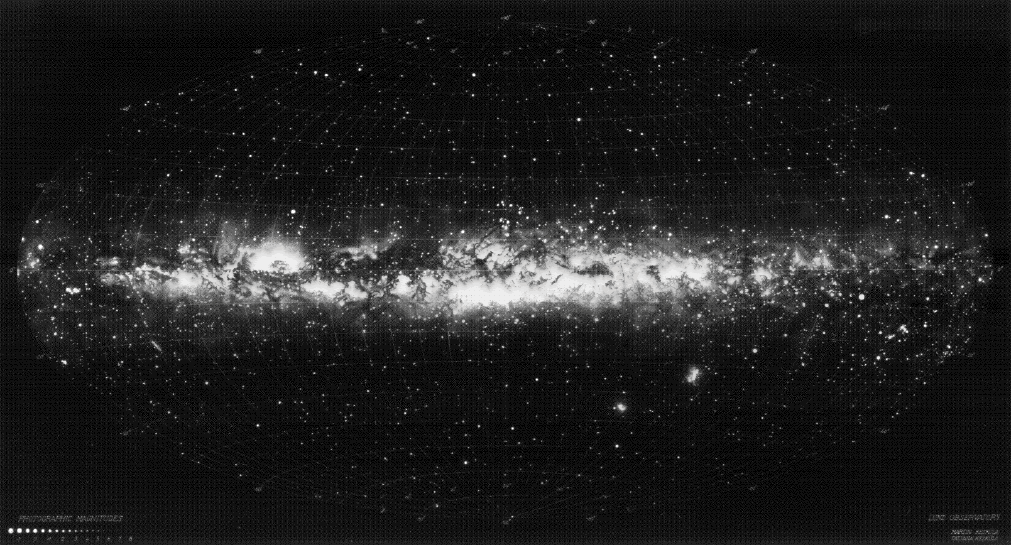detail - showing the park and trees outside the gallery window (image has been rotated 180º so you can see the park more clearly)
Some photos from the exhibition... all went well - good feedback, good attendance. I am happy with this little project.
The
camera obscura effect created by the installation was something that I thought would be immediately recognisable to everyone that entered the darkened space - but not so, it seems... many people thought it was just light, which moved and got blurry sometimes (that 'blurriness' was the tiny upside-down pictures of trucks and buses passing by outside on Chalmers St).
I really liked how, on a rainy day, the whole effect was this soft, blue light, with little flashes of colour (people passing by in brightly-colored raincoats). And on a sunny day, in the late afternoon, the setting sun created a brilliant array of points of light, a mosaic of tiny pictures of the actual sun setting behind the fig trees of Prince Alfred Park.
myself and Fiona Hall inspecting the camera obscura for quite some time on a rainy afternoon...
I even managed to drag
Fiona Hall along to see it and give me some feedback - we spent a couple of hours inside the installation, chatting and watching... Fi had a lot of thoughts to offer (as usual), which was fabulous - we discussed that fine line between over-explaining a work, and providing sufficient information so that the audience would have a sense of 'what it was all about'.
What I love about Fiona's work is how her objects reel you in with their seductive qualities, and while you're examining it you start getting the actual point of the thing (which isn't just what it looks like and in made of)... yes yes, i know that's part of 'art making 101', but still - that balance between the beguiling surface and the layers underneath it is something that I think is very relevant, especially in this world that we live in, right now.
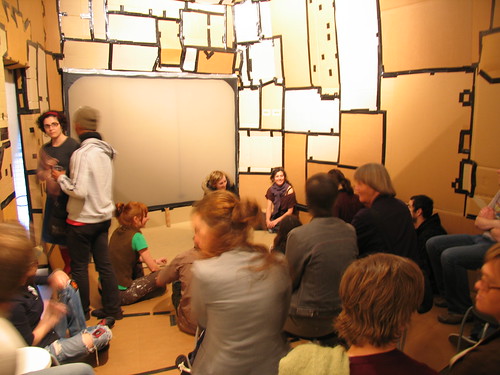 Artist talk time, on the last day of the exhibition - we turned the lights off once everyone was inside and I spoke about the work in the darkness with the starmap glowing happily - the most eerie artists' talk I have ever done...
Artist talk time, on the last day of the exhibition - we turned the lights off once everyone was inside and I spoke about the work in the darkness with the starmap glowing happily - the most eerie artists' talk I have ever done...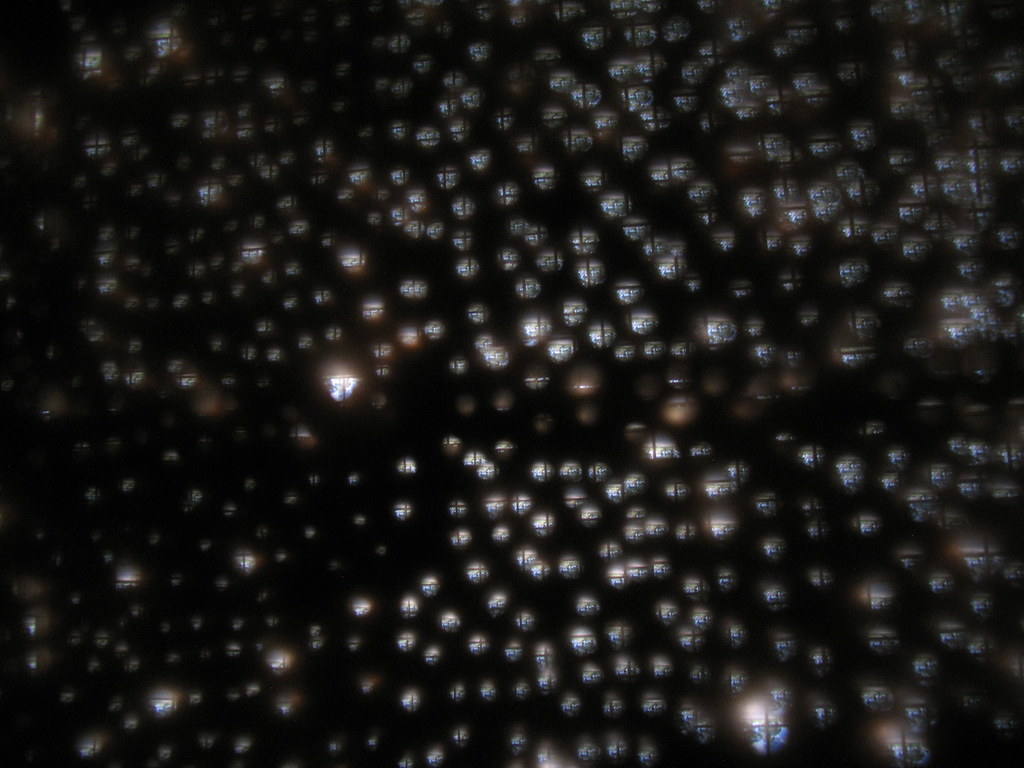
detail - (cloudy day)So. The exhibition. 3 weeks of showing and an artist talk later, it's all done and dusted and currently being mulched at some cardboard recycling plant in southern Sydney. But permutations of the project seem to be putting out feelers - the
Ergas Collection are featuring one of my
solar-powered cardboard planetariums in a show in Melbourne in July. And it also looks likely that I'll be making some more for
Sydney Observatory's 150th anniversary in June this year... so we shall see where where these cardboard universes take me...
Photos of the installed exhibition are
here - and the cache of photos for
About, above as a project in its entirety can be found
here.
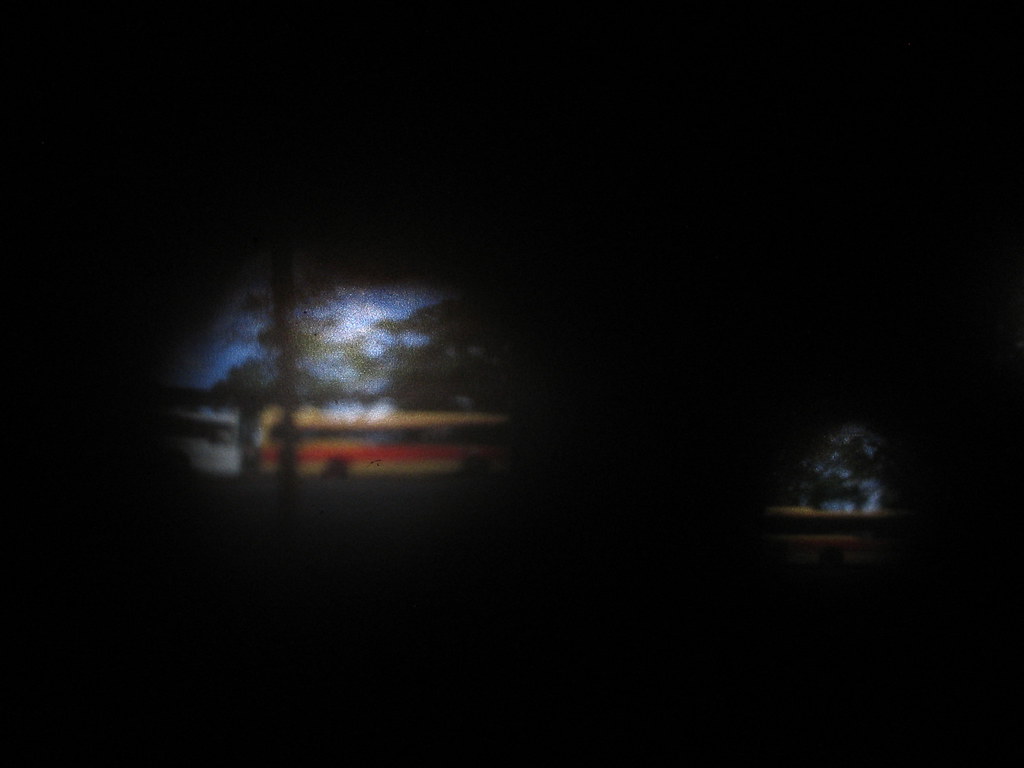 detail - bus parked outside
detail - bus parked outside view of Firstdraft Gallery 3, as seen from the street outside
view of Firstdraft Gallery 3, as seen from the street outside view of street outside gallery, as seen from the west-facing window which contained the camera obscura... this was the view that made up the tiny pictures
view of street outside gallery, as seen from the west-facing window which contained the camera obscura... this was the view that made up the tiny pictures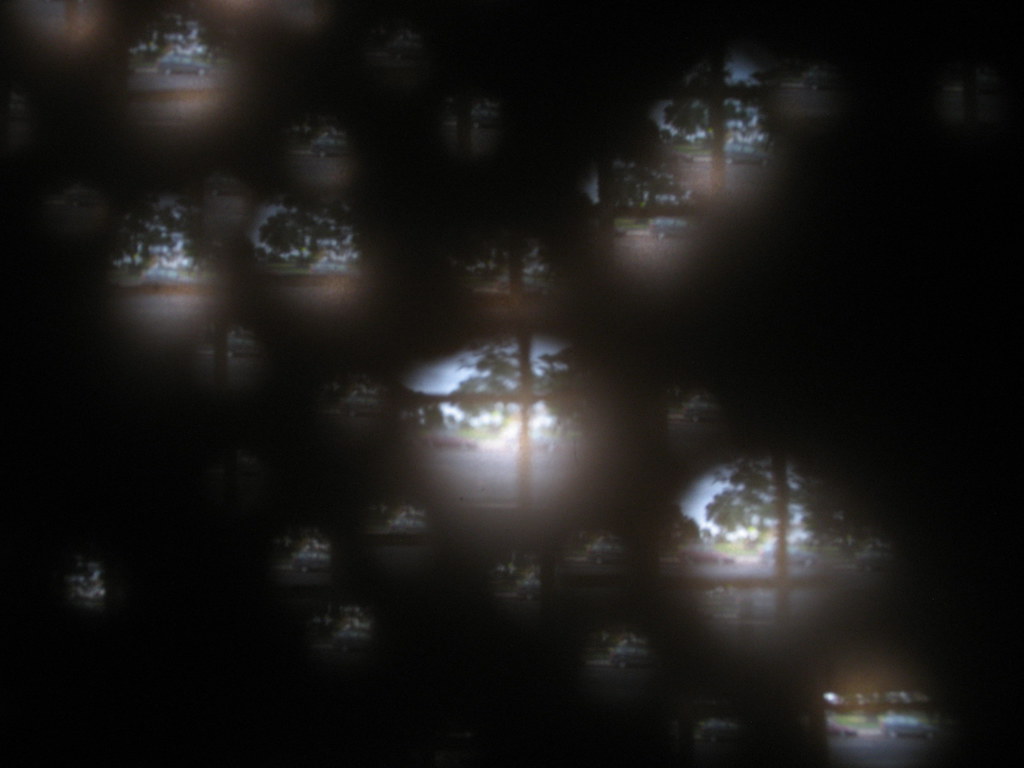 detail - showing the park and trees outside the gallery window (image has been rotated 180º so you can see the park more clearly)
detail - showing the park and trees outside the gallery window (image has been rotated 180º so you can see the park more clearly)






